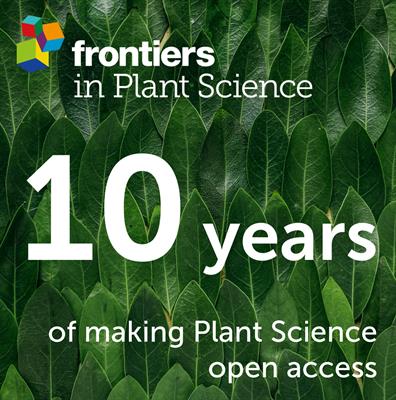美国农业部一个多世纪的梨树育种工作
IF 4.1
2区 生物学
Q1 PLANT SCIENCES
引用次数: 0
摘要
美国农业部(USDA)进行欧洲梨(Pyrus communis L.)接穗育种已有一个多世纪的历史。该育种项目于 20 世纪初由 Merton B. Waite 在华盛顿地区启动,其主要目标是培育寄主对由 Erwinia amylovora 引起的毁灭性病害火疫病的抗性。在美国生产的大多数历史悠久的欧洲梨栽培品种都容易感染火疫病,因此需要培育抗性品种。美国农业部六代以上的育种家一直在努力培育抗病的欧洲梨。除抗火疫病外,梨育种计划还寻求提高果实品质、耐寒性和对梨的重要害虫--蚜虫(Cacopsylla pyricola Foërster)的抗性。在此,我们将讨论每一代育种者的育种历史。我们还介绍了育种目标、亲本选育和释放。从 1938 年到 2022 年,该计划总共发布了 10 个命名的梨品种。本文章由计算机程序翻译,如有差异,请以英文原文为准。
Over a century of pear breeding at the USDA
The U.S. Department of Agriculture (USDA) has performed European pear (Pyrus communis L.) scion breeding for over a century. The breeding program started in the early 1900s by Merton B. Waite in the Washington D.C. area and the program’s main goal was to develop host resistance to the devastating disease fire blight, caused by Erwinia amylovora. Most of the historic European pear cultivars being produced in the U.S. were susceptible to fire blight, prompting a need to breed for resistance. More than six generations of USDA breeders have continued this effort to breed disease-resistant European pears. Along with fire blight resistance, the pear breeding programs sought improved fruit quality, cold hardiness, and resistance to psylla (Cacopsylla pyricola Foërster), a significant insect pest of pear. Herein, we discuss the history of the program through each generation of breeder(s). We also present breeding aims, parental selection, and releases. In total, the program has released ten named pear varieties between 1938 and 2022.
求助全文
通过发布文献求助,成功后即可免费获取论文全文。
去求助
来源期刊

Frontiers in Plant Science
PLANT SCIENCES-
CiteScore
7.30
自引率
14.30%
发文量
4844
审稿时长
14 weeks
期刊介绍:
In an ever changing world, plant science is of the utmost importance for securing the future well-being of humankind. Plants provide oxygen, food, feed, fibers, and building materials. In addition, they are a diverse source of industrial and pharmaceutical chemicals. Plants are centrally important to the health of ecosystems, and their understanding is critical for learning how to manage and maintain a sustainable biosphere. Plant science is extremely interdisciplinary, reaching from agricultural science to paleobotany, and molecular physiology to ecology. It uses the latest developments in computer science, optics, molecular biology and genomics to address challenges in model systems, agricultural crops, and ecosystems. Plant science research inquires into the form, function, development, diversity, reproduction, evolution and uses of both higher and lower plants and their interactions with other organisms throughout the biosphere. Frontiers in Plant Science welcomes outstanding contributions in any field of plant science from basic to applied research, from organismal to molecular studies, from single plant analysis to studies of populations and whole ecosystems, and from molecular to biophysical to computational approaches.
Frontiers in Plant Science publishes articles on the most outstanding discoveries across a wide research spectrum of Plant Science. The mission of Frontiers in Plant Science is to bring all relevant Plant Science areas together on a single platform.
 求助内容:
求助内容: 应助结果提醒方式:
应助结果提醒方式:


